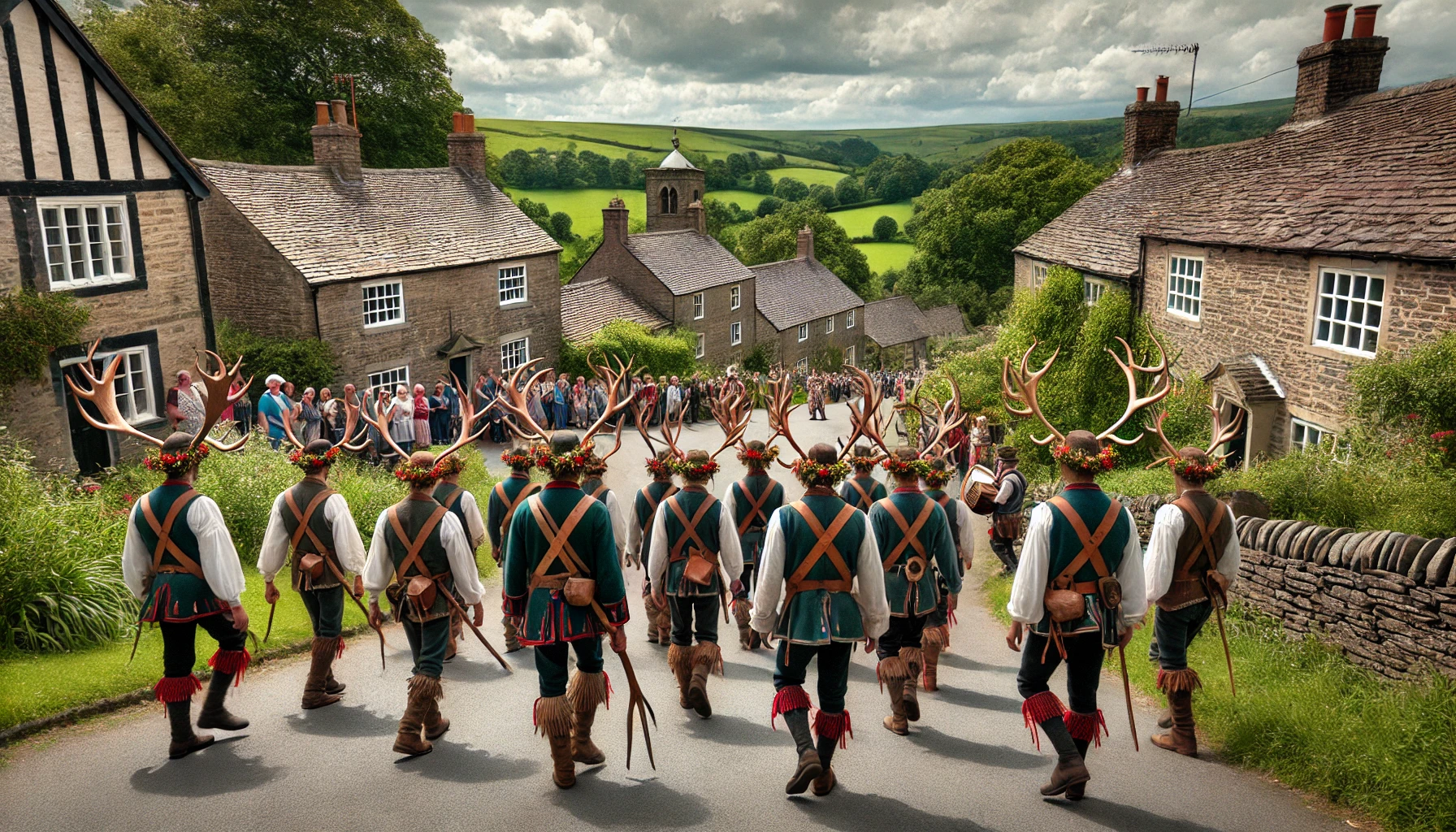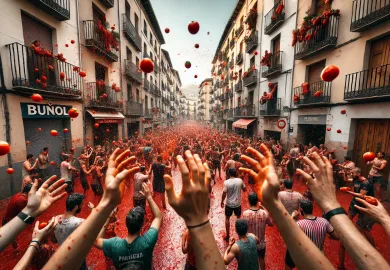
The Abbots Bromley Horn Dance is one of England’s most ancient and enigmatic traditions, rooted deeply in the folklore of Staffordshire. This historic dance, with its origins shrouded in mystery, continues to captivate both locals and visitors with its unique blend of history, culture, and spectacle. Each year, this small village in Staffordshire comes alive with the sights and sounds of this age-old ceremony, offering a glimpse into England’s rich cultural heritage.
A Brief History of the Abbots Bromley Horn Dance
The origins of the Abbots Bromley Horn Dance are somewhat obscure, with various theories suggesting links to ancient pagan rituals, medieval church practices, or even Viking customs. What is certain, however, is that the dance has been performed for centuries, with the first recorded mention dating back to 1226. This makes the Horn Dance one of the oldest surviving folk traditions in the United Kingdom.
The dance is traditionally performed on Wakes Monday, the first Monday following the first Sunday after September 4th. This timing suggests a possible connection to harvest festivals, which were common in medieval England. Some historians believe that the dance was initially part of a wider celebration of the end of the agricultural year, symbolizing fertility and the hope for a bountiful harvest in the year to come.
Over the centuries, the dance has evolved, incorporating elements from various periods in English history. Despite these changes, the core of the tradition has remained remarkably consistent, preserving its medieval character and unique cultural significance.
The Intricacies of the Dance and Its Participants
The Abbots Bromley Horn Dance is performed by a group of twelve dancers, each playing a specific role within the ceremony. The most iconic of these are the six men who carry sets of reindeer antlers, believed to be over 1,000 years old. These antlers, which are the focal point of the dance, are mounted on wooden frames and can weigh up to 25 pounds each. The dancers must carefully balance them on their shoulders as they move through the village, a task that requires both strength and skill.
In addition to the horn bearers, the dance includes a Hobby Horse, a Fool, a Maid Marian, a Bowman, and a Boy carrying a crossbow. Each of these characters adds a distinct flavor to the performance, contributing to the overall spectacle. The Fool, in particular, plays a crucial role, interacting with the audience and adding a touch of humor to the proceedings. The Hobby Horse, meanwhile, represents a connection to ancient fertility rites, further emphasizing the dance’s deep roots in pre-Christian traditions.
The dance itself is a slow, rhythmic procession through the village, accompanied by the sound of traditional music played on a pipe and tabor. The dancers follow a set route, stopping at various points to perform specific figures or movements. These include the “Clockwise Round,” “Antlers Across,” and “Crossing the Swords,” each of which has its own symbolic meaning and historical significance. The entire performance lasts several hours, drawing large crowds who come to witness this living piece of English history.
Cultural Significance and Modern-Day Celebrations
While the Abbots Bromley Horn Dance is steeped in tradition, it is far from a static relic of the past. On the contrary, it remains a vibrant and integral part of the local community, attracting visitors from around the world. For the people of Abbots Bromley, the dance is more than just an annual event; it is a symbol of their heritage and a source of immense pride.
The dance also serves as a reminder of the enduring power of folklore and the importance of preserving cultural traditions in the face of modernity. In an age where many ancient customs have been forgotten or commercialized, the Abbots Bromley Horn Dance stands out as a rare example of a tradition that has been carefully maintained and passed down through generations.
The modern-day celebrations surrounding the Horn Dance have expanded to include a variety of activities, from craft fairs and markets to live music and traditional games. These events provide an opportunity for visitors to immerse themselves in the local culture and experience the unique atmosphere of this historic village. For many, the highlight of the day is the chance to see the dancers up close, marvel at the intricacy of their costumes, and learn more about the history behind this fascinating tradition.
Preserving the Legacy for Future Generations
The future of the Abbots Bromley Horn Dance, like that of many ancient traditions, depends on the continued involvement of the local community and the willingness of younger generations to take up the mantle. In recent years, efforts have been made to ensure that the dance is not only preserved but also adapted to the changing times.
One of the key challenges facing the Horn Dance is the physical demands placed on the dancers, particularly those who carry the heavy antlers. To address this, training programs have been established to help younger participants develop the strength and stamina needed to perform the dance. Additionally, efforts are being made to document the tradition more thoroughly, creating a detailed record of the dance’s history, choreography, and cultural significance.
Education also plays a vital role in preserving the Horn Dance. Local schools often incorporate the dance into their curriculum, teaching students about its historical context and encouraging them to participate in the celebrations. This helps to instill a sense of pride in the village’s heritage and ensures that the tradition remains alive and relevant in the years to come.
Finally, the Abbots Bromley Horn Dance has gained recognition beyond the borders of Staffordshire, with cultural organizations and heritage bodies working to promote the dance on a national and international level. This increased visibility has helped to attract new audiences and secure funding for the preservation of the dance, ensuring that it will continue to enchant and inspire for generations to come.
In conclusion, the Abbots Bromley Horn Dance is a truly remarkable tradition, one that embodies the rich tapestry of English folklore and offers a unique window into the past. Its survival over the centuries is a testament to the enduring power of culture and community, and its continued relevance today serves as a reminder of the importance of preserving our shared heritage. Whether you are a history enthusiast, a cultural explorer, or simply someone who appreciates the beauty of tradition, the Abbots Bromley Horn Dance is an experience not to be missed.








